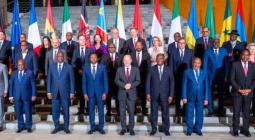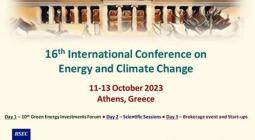Uruguay’s green power revolution: rapid shift to wind shows the world how it’s done
Stung by 2008’s oil price spike, Uruguay now produces up to 98% of its electricity from renewables. Can other countries follow suit?
It was the 2000s, and fossil fuel prices were rising worldwide. After a period of volatility in the 1980s, the crude oil price per barrel had reached one of its lowest points – $20 – at the end of 2001 but then, over the course of six years, it tripled before a new oil shock saw prices surpass those of the 1970s, reaching a record $145 a barrel on 3 July 2008.
Uruguay imports its oil, so it had a problem. Demand for energy in the country had grown by 8.4% the previous year and household energy bills were increasing at a similar rate. The 3.4 million-strong population was becoming restless. Lacking alternatives, President Tabaré Vázquez was forced to buy energy from neighbouring states at higher prices, even though Argentina, Uruguay and Paraguay had a mutual aid agreement in case of emergency conditions.
To escape the trap, Vázquez needed rapid solutions. He turned to an unlikely source: Ramón Méndez Galain, a physicist who would transform the country’s energy grid into one of the cleanest in the world.
Today, the country has almost phased out fossil fuels in electricity production. Depending on the weather, anything between 90% and 95% of its power comes from renewables. In some years, that number has crept as high as 98%.
Phasing out fossil fuels was a central issue at Cop28. After a week of tense negotiations in Dubai, countries agreed to transition away from fossil fuels within energy systems – but campaigners, governments and environmental experts continue to debate how to make that transition.
One answer could lie in what Uruguay has achieved within a decade and a half.
“I had been working abroad for 14 years, and when I came back, there was this energy crisis, but the only solution people were giving was to install a nuclear power plant – that was it,” Galain remembers. “I was a nuclear physicist, so I thought I could understand a little about this problem.”
The more Galain researched the issue, the more he became convinced that nuclear power was not the answer for Uruguay. Instead, he argued, it was renewables. He published his findings in a paper that laid out his belief that the country should go all in on wind power. Soon after, he received a phone call inviting him to become Uruguay’s energy secretary and to implement his plan.
“Imagine my surprise,” Galain says. “This was crazy. But I did something even more crazy: I accepted.”
Uruguay is a small country – about 26% smaller than the UK by area – wedged between two giants. Argentina’s sprawling capital, Buenos Aires, lies 31 miles (50km) south of the mouth of the Rio de la Plata, which forms part of the border between the two countries, while Uruguay shares its northern border with Brazil.
"No one believed we could do it. We needed new solutions. We needed to do things differently Ramón Méndez Galain
In this context, the country is easily overlooked. However, economically it is a South American success story. Its GDP per capita was £16,420 in 2022, according to the World Bank, the highest on the continent; only a tiny fraction of its population lives in extreme poverty. The country has a burgeoning middle class – accounting for about 60% of the population – and there are high expectations for lifestyle and opportunities.
Such demographic change has driven demand for the trappings of a contemporary, 21st-century lifestyle. Homes are fitted with washing machines and dishwashers, and air-conditioning units have become commonplace, as have vast flat-screen TVs and connected devices.
All of that requires power. Over the course of about a decade, Uruguay, under the stewardship of Galain, installed about 50 windfarms across the country, decarbonised the grid and bolstered its hydropower.
The biggest challenge, however, was to change the “narrative” about renewables. Back then, sustainable energies were still surrounded by many misconceptions, says Galain: they were too expensive, too intermittent or would raise unemployment – and changing these stories proved vital to getting buy-in from all levels of society.
“No one believed we could do it. We needed new solutions. We needed to do things differently,” he says. “Today, even members of that cabinet say to me: ‘When you were saying those things on TV in 2008, we were thinking, how are we going to explain this when we fail?’”
Galain says there needed to be a “strong national narrative” to make it work. “I told people this was the best option even if they don’t believe climate change exists. It’s the cheapest and not dependent on crazy fluctuations [in oil prices].”
With that narrative, the government set about winning over a sceptical populace. One initial concern was that jobs would be lost in the energy sector. Instead, about 50,000 new jobs were created – a large number in a country with such a small population. The idea of a “just transition”, in which nobody was left behind, became central, and some workers were offered places on retraining schemes to adapt to the new normal.
Others were able to take advantage of the changes. Santiago Revello, 52, owns a beef farm in central Uruguay, about 175 miles north of the capital, Montevideo. Beef production is a primary industry across the country, owing to its vast swathes of grasslands.
The farm broke even financiallybut in 2009, the Revello family was debating whether to sell its farm. That was when Revello met Fernando Schaich, who ran what was previously a small energy-efficiency consultancy, and had learned about the country’s transition to renewables.
Schaich had spotted an opportunity in the transition plan early on. His company had previously made its money by advising businesses on how they could cut their energy usage, but it moved into windfarm development. He told Revello that his family’s farm could be a site for an onshore windfarm – and that building one need not affect his cattle.
The pair prepared a bid for a contract and went to a developer, but lost. “Fernando was gutted by this,” Revello says. “He told me: ‘You can go with another company.’ But he had always been honest with me, so I told him: ‘It’s not all about money.’”
Today, Revello’s farm is home to 22 wind turbines, a side business that gives the family a healthy source of income.
Uruguay’s green transition has not been without its challenges, however. One was logistics, according to Gonzalo Casaravilla, who served as president of the state energy company UTE between 2010 and 2020.
Outside cities, Uruguay’s roads are small, with few motorways. The parts of wind turbines are anything but small, and moving them into position a difficult undertaking. This was achieved by means of rolling roadblocks and convoys to create minimum disruption when new windfarm projects were built.
"People are wondering what happened and why their bill isn’t lower. But in that same period, we had 40% poverty; now it’s 10% Ramón Méndez Galain
“It was funny. In the beginning, the technical people in my company were saying: ‘Whoa, be careful.’ A year and a half later, they said: ‘OK, it’s a good idea,” says Casaravilla. “There was friction at the beginning, but then it was the best team we could have had.”
The transition has not been universally popular. There are occasional grumbles from people who wonder why their energy bills have not fallen if renewable energy is “free”. This is a complaint that Galain shrugs off.
“People are wondering what happened and why their bill isn’t lower,” he says. “But in that same time period, we had 40% poverty; now it’s 10%, and extreme poverty has almost disappeared. “People now have air conditioning that they didn’t have before, using more and more electricity.”
Xavier Costantini, a partner at the consultancy McKinsey, based in Montevideo, says that the idea that renewable energy is free is a misconception. There are maintenance costs – although relatively modest – but crucially, the initial investment needs to be paid back.
The question of whether Uruguay’s transition provides a vital blueprint for the world is not a simple one. Some characteristics gave the country an advantage, Costantini says. It is “blessed by nature” with strong winds and considerable hydropower, which is sometimes sold to Brazil when in surplus.
An alternative energy source such as hydropower is vital to plug gaps in a renewable grid as wind and solar are intermittent.
Unlike some countries in the region, Uruguay is very stable politically, which made investing for the long term much more palatable for foreign companies, Costantini says. It also had relatively high tax rates on imports, a lever it was able to use to encourage foreign investment.
However, such conditions can be found elsewhere. In the UK, for example, Scotland has considerable hydropower potential. “Full decarbonisation is expensive, but you could get to a high level of decarbonisation,” Costantini says.
“I’d say by the end of the next decade, there’s certainly [scope] for a country such as the UK to have a highly decarbonised grid at a very cost-competitive rate.”
Uruguay, meanwhile, has moved on to what is becoming known as the second stage of its transition. It is gradually moving its buses and public vehicles over to electric, and incentivising taxi and minicab drivers to switch. How well this works could provide a global roadmap for how other countries can decarbonise their economies.
Cover photo: Uruguay is blessed with strong winds. Photograph: Alessandro Cinque






